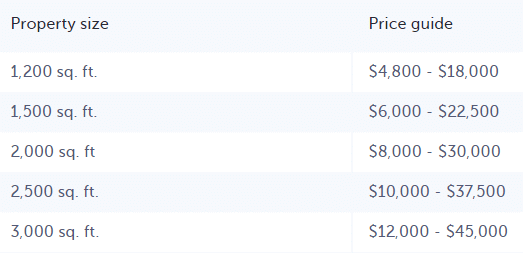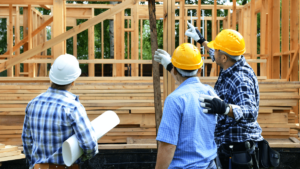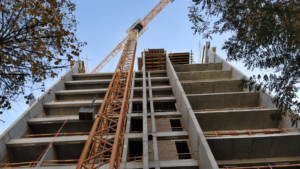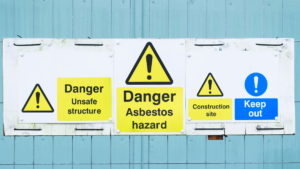The average demolition costs clients $10,000, but experts claim the actual amount can be anywhere between $4,800 and $45,000, depending on the size of the property.
Even though the latter sounds promising, construction companies should remember they will have to cover specific fees during the demolition process.
After deducting these expenses, you might be left with a lot less than you initially thought.
So, if you’re an owner of a construction company about to delve into demolition, keep reading!
We’ll explain how to manage demolition costs to save you money while ensuring high-quality results.
In this article...
Get Demolition Permits
Getting the necessary licenses for your demolition project should be the first step in managing costs.
After all, you’ll need a local permit to securely demolish anything that required a permit to construct.
Moreover, even if a structure was built without a license, you must get one for demolition.
The rules for large-scale demolition vary by state, but these are some of the standard requirements for getting a permit:
- Check if the building is considered historic
- Make sure you meet the tree preservation requirements
- Know whether you’ll have to replace and compact the soil
These details are critical in determining what type of permission you need and if you can even get one.
For example, if the object is historical, you must first allow the Historic Preservation program to inspect the place.
This examination will cost you $282 if the structure was built before 1939 and $51 if it was built after 1939.

If the location is a potential landmark, you’ll need to pay $1,504 for a board hearing to receive the permit.
You might believe you can get away with doing a quick demolition without a permit, but you could get caught. Expert in residential construction, Cati O’Keefe, warns against it.
“If you get caught without a permit, you may have to pay up to 200% of the cost of the permit plus the permit fee.”
The average house demolition permit will set you back by $200. But, the larger the city, the higher the cost of a demolition permit.
If you get caught without a demolition license in a big city, you might have to pay thousands of dollars, which is more than the $200 you could have paid upfront.
Therefore, take the time to consult with the local authorities and get all the necessary permits.
It’s important to know how much you will have to pay for the licenses because they are something you should include in your project cost estimate.
With a demolition permit, you can rest assured that the work is in compliance with local regulations.
Inspect Hazardous Materials
Hazardous materials on the job site might drive up costs, so inspect them before negotiating with the customer.
Before you set the final price, identify any hazardous materials like asbestos, lead dust, and synthetic mineral fibers through a detailed inspection of the building.
If these substances are present, you’ll need to take extra steps to keep everyone safe during demolition. As a result, you’ll raise the price for the buyer.
Let’s use asbestos as an example and explain why you should increase the price.
If the structure you’re demolishing was built before the 1990s, it’s likely to contain asbestos. When inhaled, this toxin made of six minerals gets stuck in the lungs.
It causes scarring, inflammation, and various forms of cancer. Therefore, you must ensure the building doesn’t contain asbestos before demolition.
You may believe you can perform this inspection independently, but it is best to entrust it to professionals. Asbestos can be found in various places, as shown in the video below.
In the case of older buildings, it’s safer to hire an expert to inspect the site and determine whether asbestos is present.
That way, you’ll be sure they have covered every inch of the place.
However, keep in mind that inspections of this nature tend to be costly, sometimes even more expensive than the removal itself.
Even if they find no traces of the dangerous material on the site, you will have to pay for the inspector’s time.
If you discover asbestos on the property, you’ll have to invest considerably more in its removal.
The Environmental Protection Agency mandates the presence of an asbestos expert to ensure its proper removal and disposal.
As a result, your demolition costs will increase by at least the expert’s charge, around $2,000.
Furthermore, the Occupational Health and Safety Association (OSHA) demands the employer provide appropriate personal protective equipment (PPE) to anyone who comes in contact with asbestos.
After all, no exposure to asbestos is safe, no matter how short.
Hire an expert to determine whether any dangerous materials are present on the demolition site. You’ll have to up your price if they find anything.
Evaluate Your Demolition Object
Another wise way to save money on demolition is to thoroughly inspect the object before setting your price.
Let’s imagine you agree to a $25,000 demolition project, but once you get started, you discover the structure was built in the 1980s and contains asbestos.
That’s at least an additional $2,000 in expenses.
Then you realize the building has structural piles that allow for deep foundations, which means you’ll have to be extra careful when removing them.
Additionally, piling will leave holes in the ground that your crew will have to fill. Therefore, your original price of $25,000 will have to go up if you want to make the project worth your while.
Furthermore, you may discover that the client miscalculated the size of the structure, which means additional supplies, demolition equipment, and personnel.
The costs mount quickly, and you may not even make a profit on the project.
If you want to avoid these scenarios, take the time to inspect the object in question and don’t just take your client’s word for it.
Check all the details yourself, including the building’s square footage and the demolition type.
The demolition cost is heavily influenced by square footage. According to Airtasker, the two relate in the following way:

The bigger the object you have to demolish, the higher the price.
These are average US prices, which may vary depending on other aspects to consider, such as hazardous chemicals, location, and required permits.
Demolition doesn’t always have to be total.
Some customers will want selective demolition, in which you demolish only a portion of the object, or interior demolition, in which you remove walls and partitions but keep the exterior and most of the structure.
Of course, total demolition will be the most expensive for your clients because it takes the greatest effort and time.
Overall, if you don’t evaluate the building beforehand, you may pay more than you anticipated.
Include Waste Disposal Costs in Your Demolition Plan
When determining demolition costs, don’t forget about waste disposal!
During demolition, you can salvage or get rid of a lot of construction material.
When you’re the contractor, the material becomes your responsibility, so you have to know your options.
If you’re new to demolition, you might think the best way to go about this task is to demolish the place and then get rid of the waste.
But, you’ll have to hire someone to do this for you legally, without endangering the environment and breaking laws, which costs money.
The construction companies that don’t offer disposal services will pay anywhere from $100 to $800 per truckload of waste.
A great way to save money on waste when doing demolition work is to use the Daruma-otoshi or Cut and Take Down technique, which includes taking the building down from its base, floor by floor.
The demolition happens on ground level, allowing you to preserve and recycle as much as 90% of the interior.
This technique requires you to insert temporary columns at the ground level, demolish and clean the ground floor, and then lower the columns so you can work on the next floor, and so on.
Floor by floor, you’ll demolish the building, clean up right away, and preserve materials.
You can recycle or reuse the building’s interior and even its shell, which usually contains steel.
These materials will come in handy on your next work project, and you won’t have to pay someone to get rid of them, so you save a lot of money.
If you think recycling would work well for your company, consider using tool and material tracking apps such as GoCodes Asset Tracking to tag construction materials before safely storing them for future use.

When you need to use some recycled materials, open the app and find their location.
With such tracking tools, you can get the most out of the materials you have saved from a demolition site, thus also saving money.
Because demolition waste disposal costs might be substantial, saving and recycling materials is the more cost-effective and helpful alternative.
Handle Safety Costs
A big chunk of your demolition costs will go to safety.
After all, safety is one of the biggest concerns on the construction site, with about 15 worker deaths a day happening precisely in this field.
Because the safety situation is far from ideal, you have to do your share and invest in safe working conditions.
Start this task by inspecting the worksite before starting the demolition. OSHA requires companies to examine the demolition site and find any and all potential hazards.
This phase will alert you to potential problems and assist you in resolving them before sending workers out into the field.
According to Health and Safety Executive, some of the most common demolition site issues are:
- Falls from heights
- Falling objects
- Uncontrolled collapse
- Risks from connected services
- Traffic management
- Hazardous materials
- Noise and vibration
- Fire
- Worker involvement
Keep an eye out for any of these problems during the building survey. It will be simple to solve a problem once you’ve identified it.
For example, OSHA suggests using standard construction site PPE, like eye, face, and head protection during demolition.
On top of that, your demolition crew should use respiratory and hearing protection as well as personal fall arrest systems. PPE like this should keep your workers safe on a demolition site.
However, PPE isn’t always enough to protect workers. You need to adequately train and equip everyone who works on your demolition site.
Therefore, organize demolition training beforehand and explain all the best practices for performing this activity.
For example, when demolishing a building level, workers shouldn’t put all the waste in the same place as this might weaken the floor’s structure and cause an accident.
This fact is something you can successfully transfer to your team during training, making it essential.
Safety comes first, so always scrutinize the worksite and give your employees PPE and proper training.
Conclusion
If you plan it thoroughly, demolition doesn’t have to be expensive for you as a contractor.
So, before you give the client an estimate, conduct some research on the site and evaluate its state for yourself.
Be sure to check for any hazardous materials on the premises while you’re at it. After that, find out what permits you’ll need and how much they’ll cost.
Finally, keep in mind the costs of waste disposal and safety. You need both for a safe and high-quality demolition.
After estimating all of these factors, you may give the client your final price and go to work.











